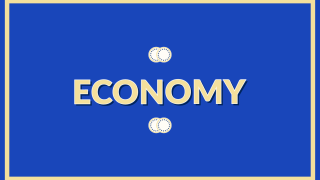David Lurie, the leading character in the novel Disgrace by CM Coetzee, appears to be devoted body and soul to courting disaster in his life, until he ends up fired from his job as professor and unhinged in his family life. In the face of his fall from grace, he concludes that, “when all else fails, philosophize”. I am tempted to do something like that when I think about a theme that has intrigued and concerned me for some time: the education-employment relationship that characterizes the country.
The problem is very simple: the behavior of the job market in Mexico is exactly the opposite of that in the U.S. and I ask myself why. Here, unemployment of university graduates is higher than the average, while the unemployment rate of persons with a secondary school education is lower. In the U.S. the opposite occurs: average unemployment there is 9%, but the number rises to 15% for those with a high school education or less, while it is 4.3% for those with a university degree.
The topic seems relevant to me for several reasons. Above all, whenever we talk about Mexican migrants to the U.S., we say that this is about a single labor market and that Mexicans who move to that country do so because there are employment opportunities, as witnessed by the empirical evidence (historically, unemployment is virtually zero among illegal immigrants). If it is only one labor market, why does the unemployment index behave so distinctly? A second issue relates to the profile of university graduates. Why are there so many graduates from social sciences in general (including law, psychology, sociology and the like) with respect to those of engineering and the hard sciences? Finally, what do these factors tell us about the Mexican economy: is there something in the education-employment equation that permits us to better understand the nature of our economic challenges?
In Profesionistas en Vilo*/Professionals on Tenterhooks, Ricardo Estrada studies university enrolment in the country over time and analyzes how the student profile has changed and its relation to the labor market. Assuming the perspective of a student who aspires to become integrated into the job market, this author’s fundamental conclusion is that “the university degree has ceased being a passport to a stable and well-remunerated life” but that, “if the professional education is understood as an investment, the opportunities are as great or greater than before”.
Estrada proposes that part of the university graduates’ unemployment problem resides in that “the profile of the candidates is not attuned to that which employers are seeking… One main concern is that the bulk of professionals have studied majors with few job opportunities”. If this is the case, the question is, why have they majored in areas with little potential of finding employment? I have no answer, but one hypothesis is that majors that are considered “easy” tend to be compatible with simultaneous work/study situations: students opt for a major that allows them to work and study under the premise that the mere degree would enable them to obtain a better job. Another view of the same hypothesis would be that university scholarships have encouraged study to obtain an income (as if it were a job) and not because of a vocation. The “easy” major ends up being very attractive even if it does not lead to a good job. It is also possible that the teaching in secondary school of key subjects such as mathematics is so deficient that those aspiring to a degree in the end reconcile themselves to something that is not necessarily their vocation. The mismatch is evident.
On the side of the employers, two very contrasting worlds rapidly appear. In general terms, the most successful companies are those engaged in the systematic raising of their productivity as a means of reducing costs and increasing profitability: they tend to contract the most qualified personnel, from whom they expect a clear contribution in order to continue increasing their productivity indices. It is here that we find concentration of the greater part of job offers for university graduates with credentials compatible with the demand for skills (which is the core of the book’s argument).
The perspective is very distinct in the remainder of the economy, whether among industrial or services enterprises. For companies not up against significant competition or that have achieved constructing protective barriers, there is no pressure to raise productivity, reduce costs, or be more competitive. These companies contract the personnel that they require, typically those with lower academic and skill levels: they don’t need more and are not willing to pay more than they need.
What we have is a bifurcated world in which two very distinct economies coexist: one that is exceedingly competitive, which requires the most qualified personnel and those with the best professional credentials; and the other, which has need of manual labor only. Although the former contributes much to the growth of the economy, the latter concentrates the greater number of employed persons. That is, as Macario Schettino says, the majority of Mexican workers are marginally productive; thus, they have low incomes. In the same manner, those that employ them add little value and, therefore, are marginally productive companies and contribute little to the development of the country.
Within this context, the political debate on the future of the economy is pathetic. The theoretical dilemma that we confront would imply choosing between the modern economy that grows but that employs a relatively low percentage of job seekers, or a decrepit economy of the past that today employs the greater number of people. Of course, this is a false dilemma but the surprising thing is the number of politicians who, in rhetoric and in practice, subscribe to the notion of staking their bets on the old and unproductive economy. To me it appears evident that the wager that the country must accept and assume is one for an economy that is modern, competitive, and disposed to generate more jobs, which are more and more productive and can pay higher salaries. The problem, of course, does not lie in that politicians and public officials are unable to understand the dilemma, but rather that their perception is that their own political costs of acting would be too high.
Wagering on a modern productive plant would entail eliminating obstacles to production in order to level the playing field for all of the companies, that is, to eliminate tariff, regulatory, and other types of mechanisms that, in fact, maintain an important part of our industry and of services providers isolated and protected from competition. Contrary to what many may suppose, protection does nothing more than perpetuate an unproductive world that translates into low salaries, uncertainty (for businesses and investors as well as for workers), and permanent havoc for the consumer. The true alternative is between a country that grows and develops and one that gives up the ghost little by little.
*Cidac, 2011
Disquisitions






Comments